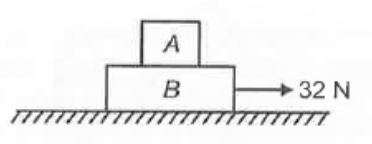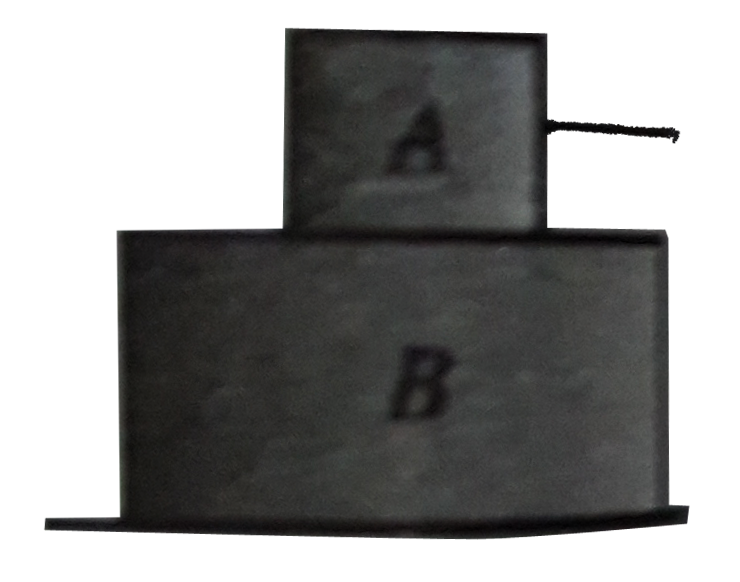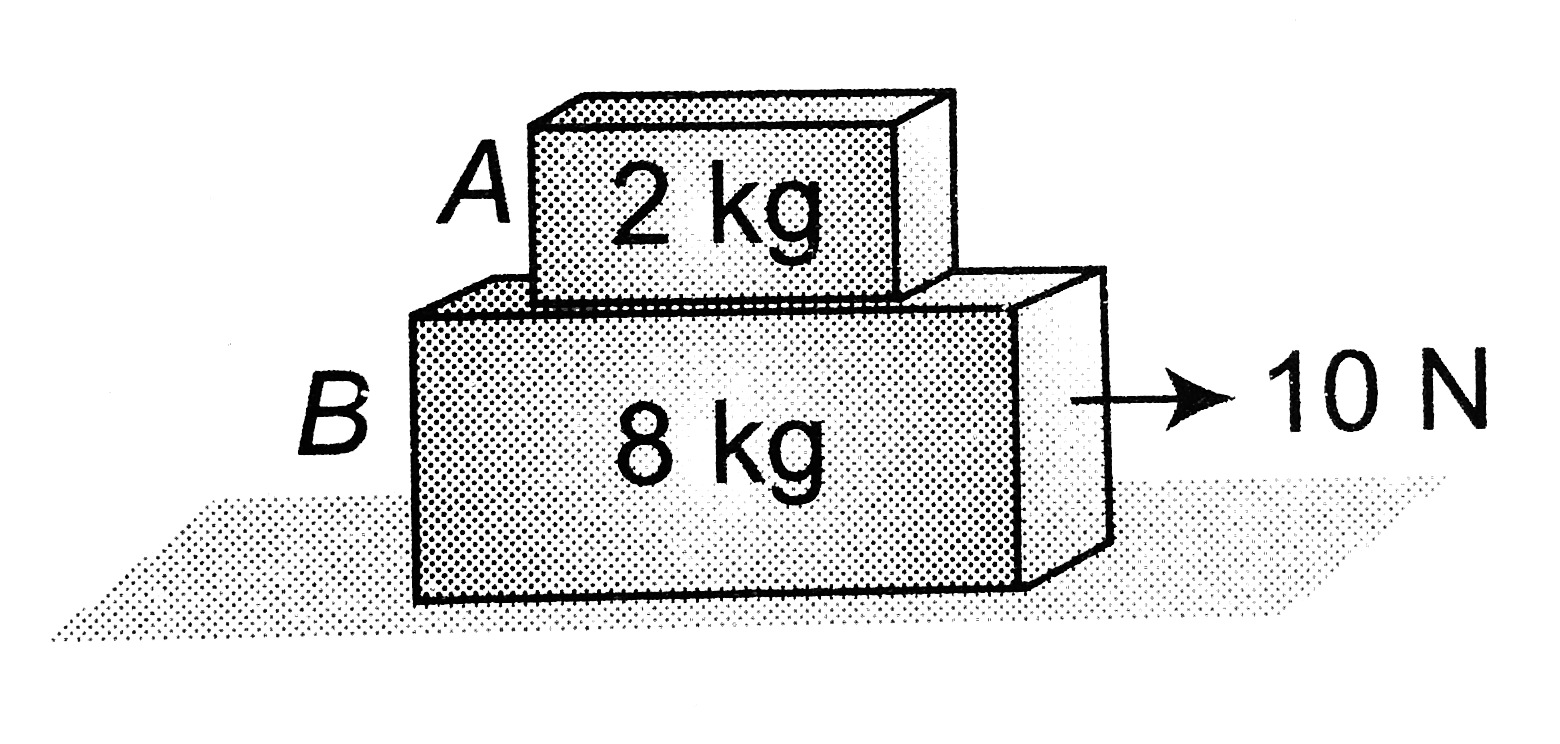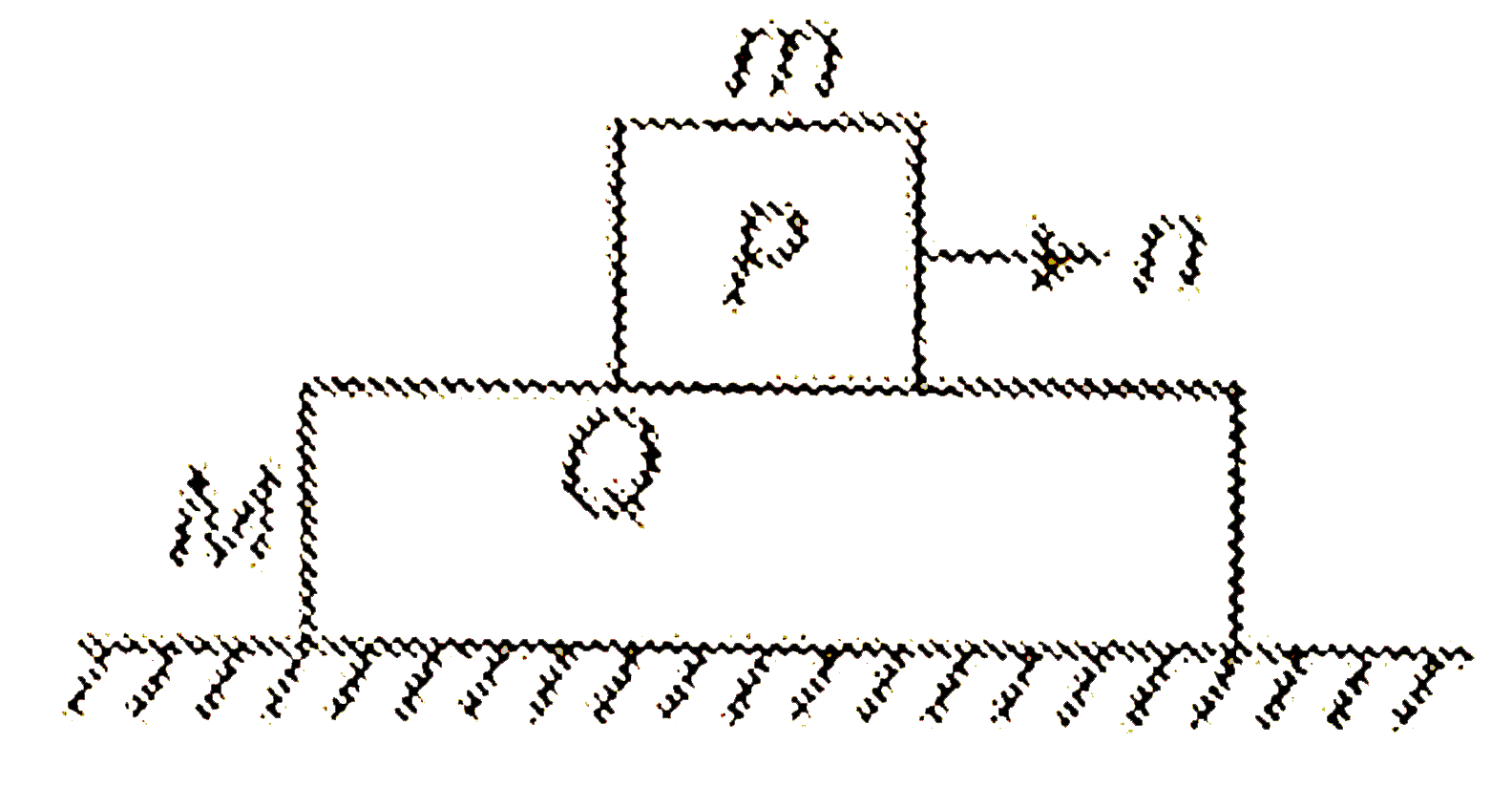Block A of mass 1kg is placed on the rough surface of block B of mass 3kg. Block B is placed on smooth horizontal surface. Blocks are given the velocities as shown. Find net work done by the frictional force. [in (−)veJ].
![Block A of mass 1 kg is placed on the rough surface of block B of mass 3 kg. Block B is placed on smooth horizontal surface. Blocks are given the velocities as shown. Find net work done by the frictional force. [in (-) ve J]. .](https://d10lpgp6xz60nq.cloudfront.net/physics_images/NAR_PHY_XI_V02_C04_E01_427_Q01.png) .
.
The correct Answer is:6
(1+3)v=(1)(8)+(3)(4)=20,v=5m/sec
for block A,Wf=12(1)(52−82)=−392J
for block B,Wf=12(3)(52−42)=+272J
net work done by friction =−6J.
Topper's Solved these Questions
Similar Questions
Block A of mass 3 kg is placed on another block B of mass 5 kg placed on the smooth surface. If coefficient of friction between two blocks is 12 and 32 N force is applied on block B as shown in the figure, then the work done by the frictional force on block A in first two second will be (initial velocity of the system is zero and g=10ms2)
 View Solution
View SolutionA block of mass m is kept over another block of mass 2m and the system rests on a smooth horizontal surface. The coefficient of friction between the block is 0.50. Find the work done by the force of friction on the smaller block by the bigger block during a displacement the of the system when a force mg is applied to the lower block
View Solution
Knowledge Check
- Question 1 - Select One
A block of mass 1 kg is placed on a horizontal surface . The reaction force to the weight of the block is
AThe 10 N normal force from the surfaceBThe 10 N reaction force from the block of the surfaceCThe weight of the earthDA 10 N force on earth - Question 2 - Select One
A block of mass m is placed on a rough horizontal surface. If minimum force to pull the block is mg2 then coefficient of friction is :
A12B√3C1√3DNone - Question 3 - Select One
A block A of mass 2kg is placed over smooth block B of mass 4kg which is placed over a smooth horizontal floor The coefficient of friction between A and B is 0.4 when a horizontal forces of magnitude 10N is applied on A the acceleration of block of A and B are
 A1ms−2and2ms−2,respectivelyB5ms−2and2.5ms−2,respectivelyCBoth the block will moves together with acceleration 1/3ms−2DBoth the block will moves together with acceleration 5/3ms−2
A1ms−2and2ms−2,respectivelyB5ms−2and2.5ms−2,respectivelyCBoth the block will moves together with acceleration 1/3ms−2DBoth the block will moves together with acceleration 5/3ms−2
A rope of mass 0.5kg is pulling a block of mass 10kg under the action of force of 31.5N If the block is resting on a smooth horizontal surface calculate the force of reaction exerted by the block on the rope .
View SolutionA block of mass 1 kg in kept on a rough horizontal surface with μs=0.1 . A force of 0.5 N is applied as shown in the figure. What is the frictional force applied by ground on the block?
 View Solution
View SolutionBlock A of mass 2kg is placed over a block B of mass 8kg . The combination is placed on a rough horizontal surface. If g=10ms−2 , coefficient of friction between B and floor =0.5, coefficient of friction between A and B=0.4 and a horizontal force of 10N is applied on 8kg block, then the force of friction between A and B is.
 View Solution
View SolutionA block of mass 3kg is placed on a rough horizontal surface (μs=0.4) . A force of 8.7N is applied on the block. The force of friction between the block and floor is .
View SolutionA block of mass m = 1 kg is placed over a plank Q of mass M = 6 kg, placed over a smooth horizontal surface as shown in figure. Block P is given a velocity v=2m/s2 to the right. If the coefficient of friction between P and Q is μ=0.3. Find the acceleration of Q relative to P.
 View Solution
View Solution

